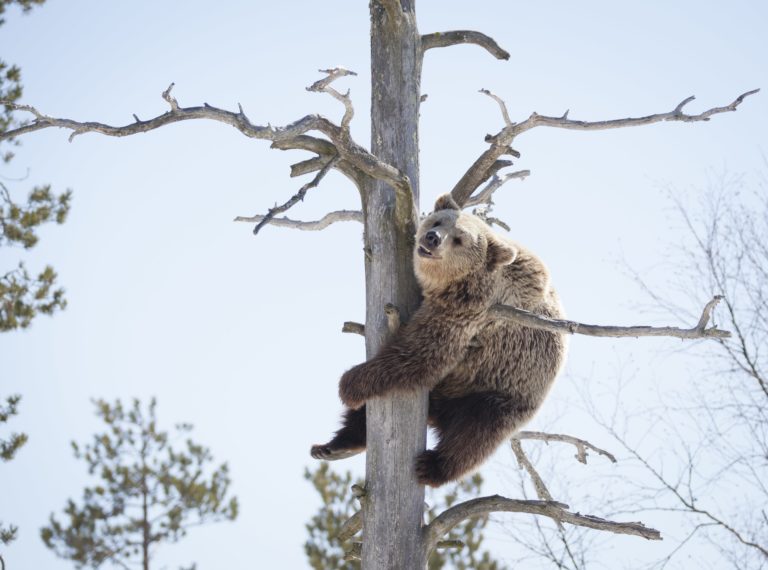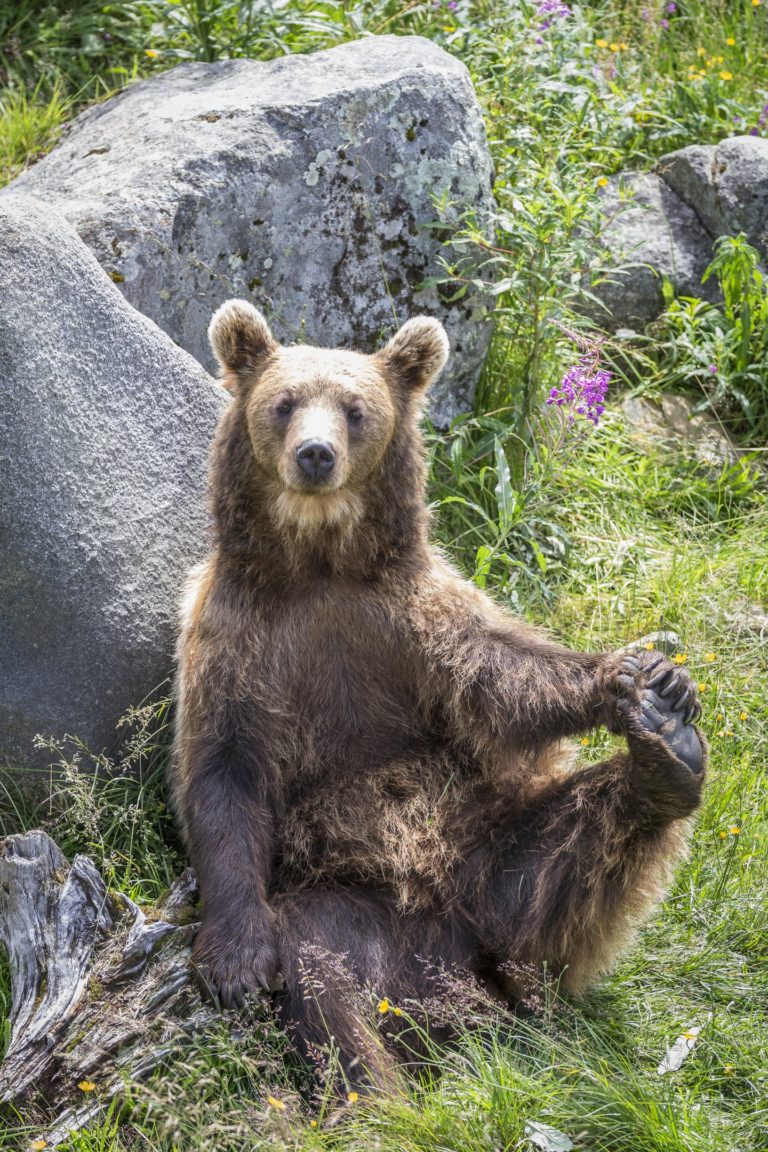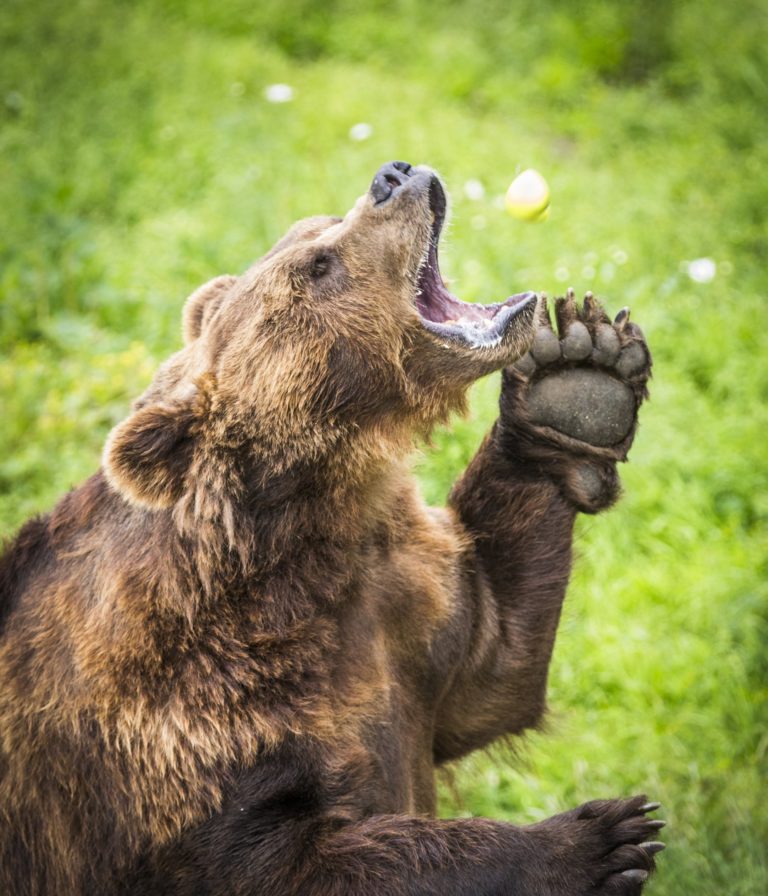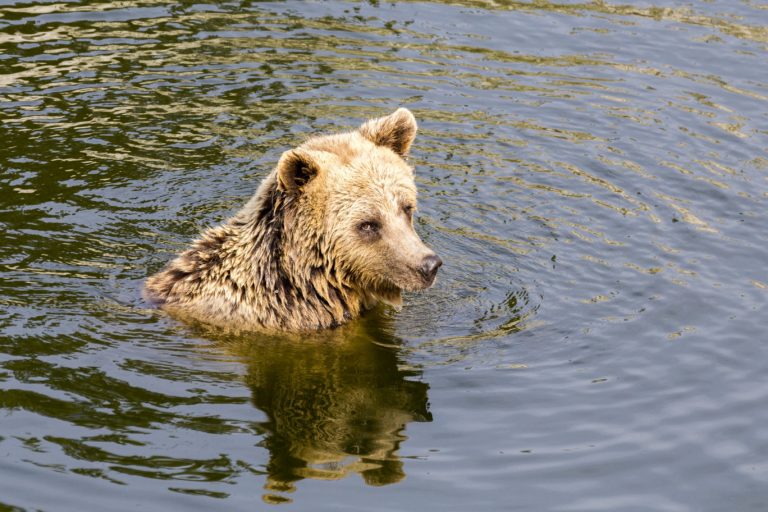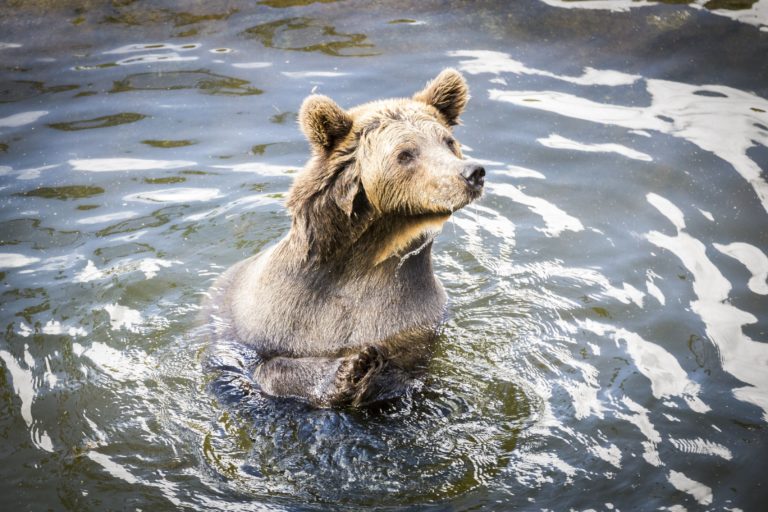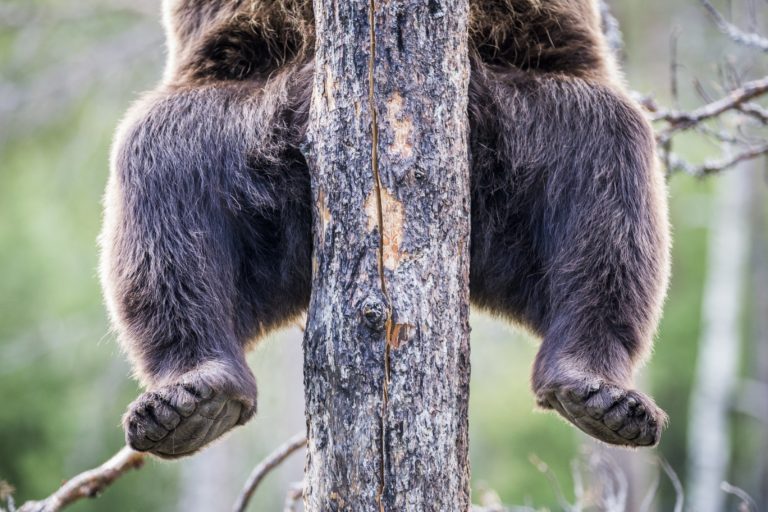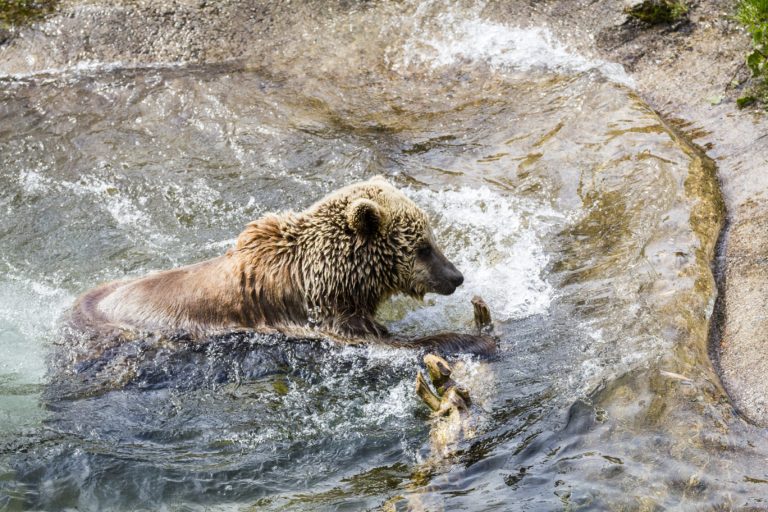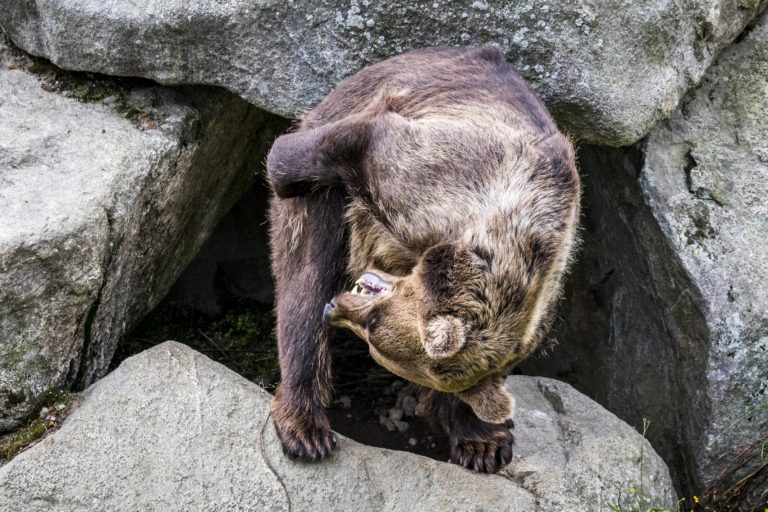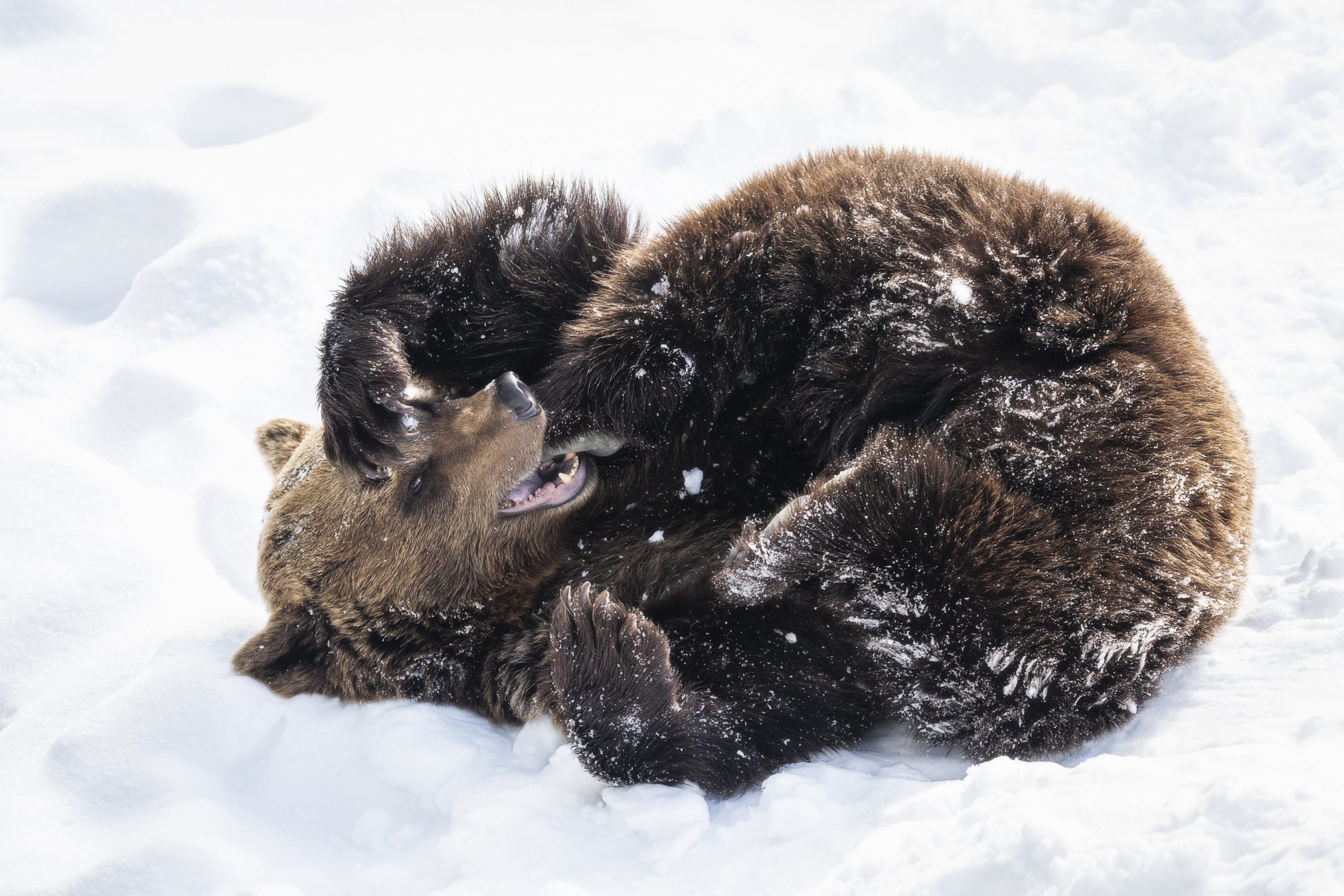
Brown bear
LIVING HABITS
The brown bear is a large bear with the widest distribution of the ursid species in the whole world. It is found nearly all over Finland, with the greatest population in the eastern parts of the country. The brown bear prefers conifer forests as its habitat. Brown bears are usually solitary. The male and female stay together during the mating season in the summer, and the mother stays with its growing cubs until the birth of the next cubs. The brown bear is active during dusk and night, but can also be seen searching for food during the day. The brown bear is mostly herbivorous. They feed on berries and soft plants and fungi, but may also eat meat, especially in the spring, when plants are not available. Their diet also includes insects, larvae and, of course – honey. Carrion is good for them too.
PROTECTION
Many of the European bear populations are small and isolated. The populations are threatened due to loss of their natural habitat and hunting. In the first half of the 1900’s the population of the brown bear in Finland sank down to merely 150 individuals; bears were killed as destructive animals. The brown bear nowadays is a protected species, and the bears travelling across the border from Russia to Finland have further increased the population, which stood at 2100-2250 individuals in 2024. In Finland, the brown bear is listed as a species of great concern, and has been a protected species since 1999. Special hunting permits and hunting quota are allowed in order to control the bears causing damage. The brown bears at Ranua Wildlife Park are part of the European Stock Book (ESB).
ADAPTING TO WINTER
The northern brown bears hibernate. They store nutrition in the fall, and their fat reserve may amount to 30-35% of their body weight. During hibernation they do not eat, drink or urinate.
Brown bear
Ursus arctos arctos
Class: Mammalia – Mammals
Order: Carnivora- Carnivores
Family: Ursidae – Bears
Size: Weight: 100-300kg, stands at 90-125cm at the withers, male larger than female.
Breeding: Heat: June-July, gestation period: 7-9 months. Delayed fetogenesis; the embryonic development starts first in the end of the fall; 1-3 cubs in January-February. Cubs are independent in 1,5 years, sexual maturity reached in 4-5 years.
Lifespan: 30 years, possibly over 40 years in captivity.

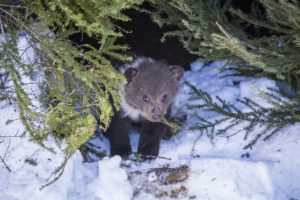
Did you know…
Did you know, that a bear dam gives birth to cubs in the middle of their hibernation in January-February? At birth, the cubs weigh only 400g, but sucking the fatty milk of their mother increases their weight tenfold in their first months.





